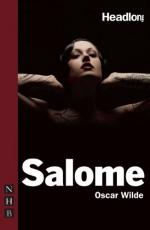|
This section contains 7,575 words (approx. 26 pages at 300 words per page) |

|
SOURCE: Ellmann, Richard. “Overtures to Wilde's Salomé.” TriQuarterly 15 (spring 1969): 45-64.
In the following essay, Ellmann traces the influence of Wilde's friendships with John Ruskin and Walter Pater on his Salomé.
Salomé, after having danced before the imaginations of European painters and sculptors for a thousand years, in the nineteenth century turned her beguilements to literature. Heine, Flaubert, Mallarmé, Huysmans, Laforgue and Wilde became her suitors. Jaded by exaltations of nature and of humanism, they inspected with something like relief a Biblical image of the unnatural. Mario Praz, bluff, and skeptical of Salomé's allurements, seeks to limit them by arguing that she became the type of no more than the femme fatale. By type he means, he says, something “like a neuralgic area. Some chronic ailment has created a zone of weakened resistance, and whenever an analogous phenomenon makes itself felt, it immediately confines itself to this...
|
This section contains 7,575 words (approx. 26 pages at 300 words per page) |

|


